DC Output Quality
For those of you that are curious as to some of the reasoning and equipment behind our PSU testing program here at TheFPSReview, we have put together an introduction for you that shares a lot of the behind the scenes of the program. This program is based on what the author developed at [H]ardOCP and utilizes the equipment bequeathed to the author by Kyle Bennett. The testing we are conducting today is exactly as described in that document and will continue with our examination of the DC Output Quality.
Control Test Graphing
This image is the blank background control test on an unused connector from our SM-8800 during the testing of the Cougar BXM 700. This lets us determine what the background noise looks like during testing.
120v Input
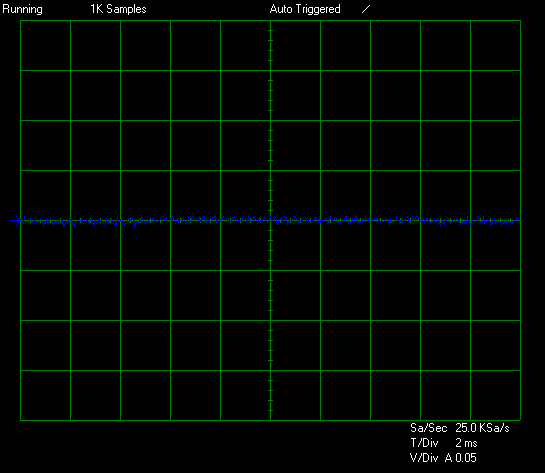
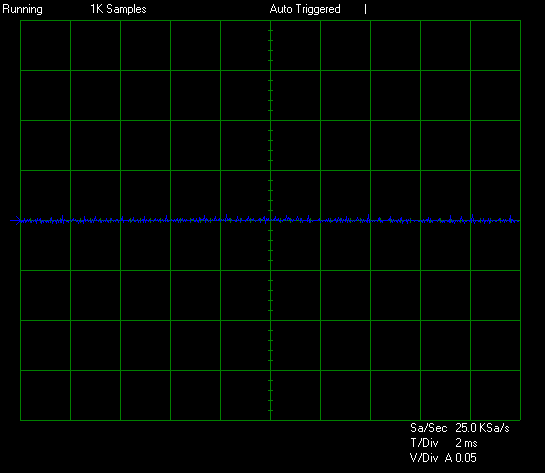
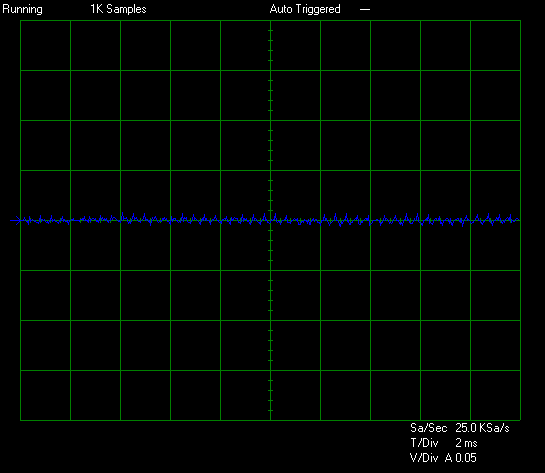
100v Input
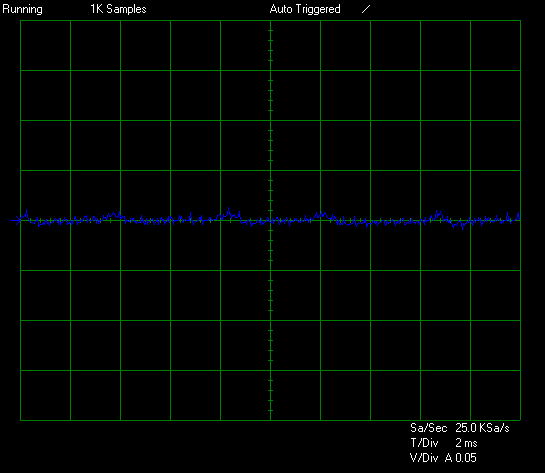

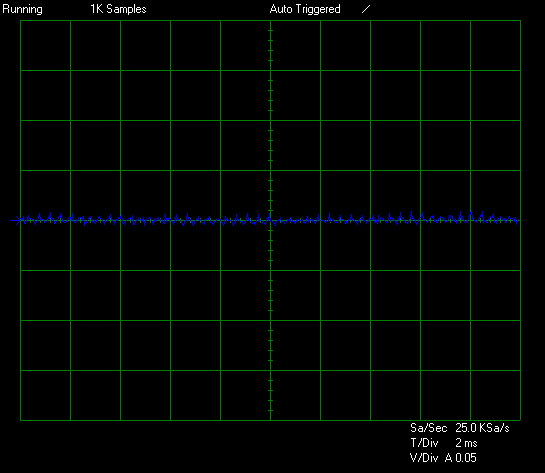
Test #1 is equal to approximately 25% of the rated capacity of the Cougar BXM 700 at 45c. This makes Test #1 equal to 184W by loading the 12v rail to 13a, the 5v rail to 2a, the 3.3v rail to 1a, the +5vsb to 2a, and the -12v to 0.3a. The Cougar BXM 700 is starting off in very good shape. The 12v and 5v rails are peaking at ~10mV of ripple/noise and the 3.3v rail is peaking at ~15mV of ripple/noise.
120v Input


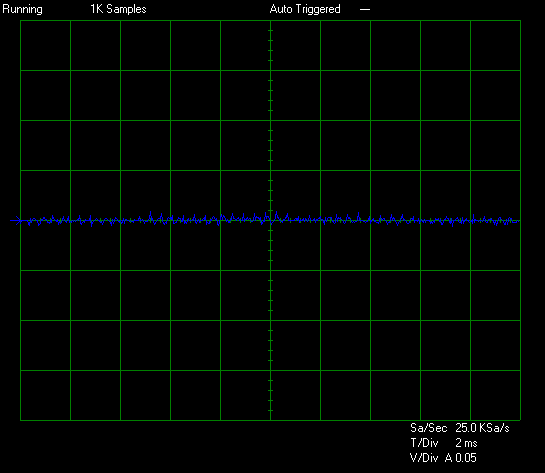
100v Input


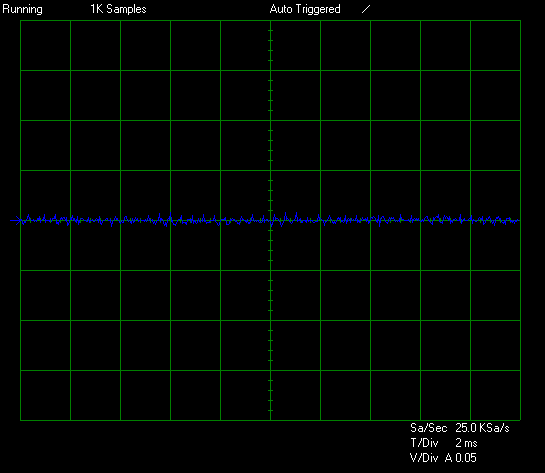
Test #2 is equal to approximately 50% of the rated capacity of the Cougar BXM 700 at 45c. This makes Test #2 equal to 324W by loading the 12v rail to 24a, the 5v rail to 3a, the 3.3v rail to 2a, the +5vsb to 2a, and the -12v to 0.3a. Test #2 sees the 12v rail move up to ~30mV of ripple/noise. The 5v rail is still coming in at ~10mV of ripple/noise, and the 3.3v rail is peaking at ~15mV of ripple/noise.
120v Input



100v Input
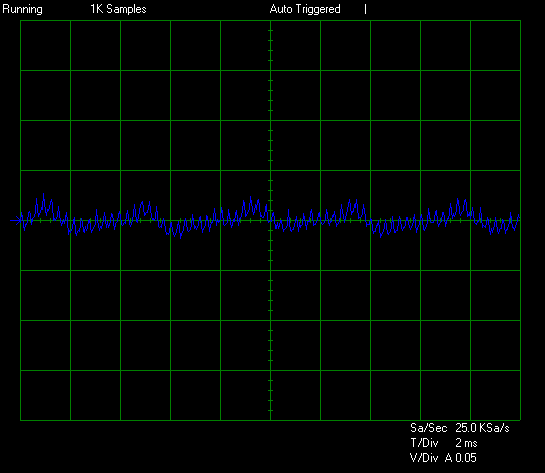

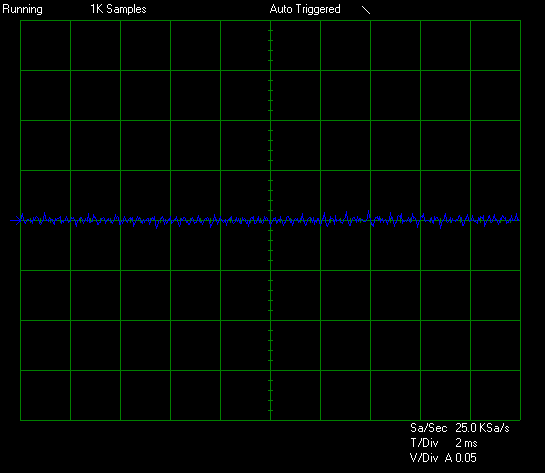
Test #3 is equal to approximately 75% of the rated capacity Cougar BXM 700 at 45c. This makes Test #3 equal to 484W by loading the 12v rail to 36a, the 5v rail to 5a, the 3.3v rail to 4a, the +5vsb to 2a, and the -12v to 0.3a. Test #3 sees the 12v rail peaking at ~40mV of ripple/noise while the minor rails are coming in at ~10mV of ripple/noise on the 5v rail and ~20mV of ripple/noise on the 3.3v rail.
120v Input

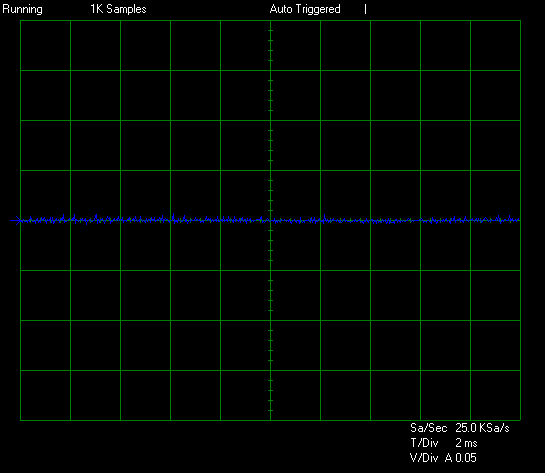
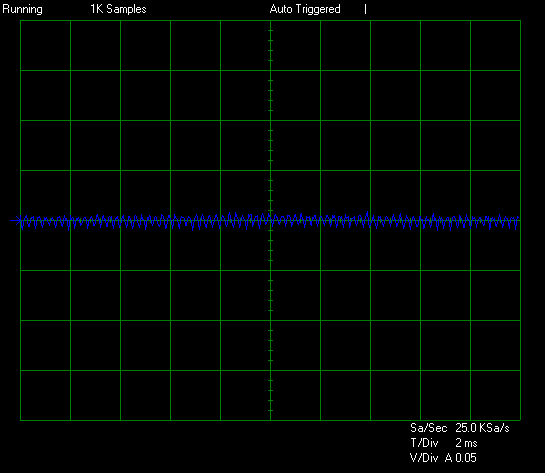
100v Input



Test #4 is equal to approximately 100% of the rated capacity of Cougar BXM 700 at 45c. This makes Test #4 equal to 693W by loading the 12v rail to 56a, the 5v rail to 1a, the 3.3v rail to 1a, the +5vsb to 2a, and the -12v to 0.3a. In the final regular test, we see the 12v rail peaking at ~85mV of ripple/noise while the minor rails are peaking at ~10mV of ripple/noise on the 5v rail and ~20mV of ripple/noise on the 3.3v rail.
Torture Test



The Torture Test is equal to approximately 80% of the rated capacity of the Cougar BXM 700 at 45C full load. This makes the Torture Test equal to 569W by loading the 12v rail to 42a, the 5v rail to 7a, the 3.3v rail to 5a, the +5vsb to 6a, and the -12v to 0.3a. At the end of the Torture Test, we see the 12v rail peaking at ~50mV of ripple/noise while the 3.3v rail is peaking at ~20mV of ripple/noise and the 5v rail is peaking at ~10mV of ripple/noise.
DC Output Quality Summary
The overall DC Output Quality of the Cougar BXM 700 is passing. The BXM 700 ended up posting a peak trace amplitude on the 12v rail of ~85mV followed by ~20mV on the 3.3v rail and ~15mV on the 5v rail during our normal tests. The worst absolute value among these (the 12v rail) hit well above ~50% of the ATX12v specification limit. Interestingly, in our Transient Load Tests, we also saw our weakest performance from the 12v rail. Overall then, it seems that the 12v rail may be the weak spot in this design. That said, the unit is still passing so we cannot fail it based on this, but it is a point that does warrant some attention. Let’s move on now and see how all of this wraps up!

